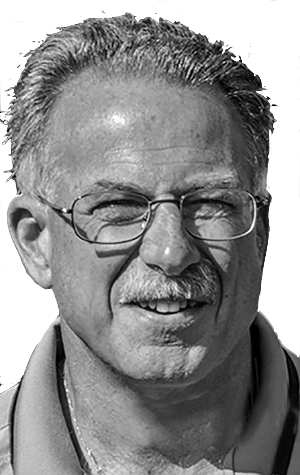The Search For Your Golf Ball Shortens | Rule 18-2
Mike Fay Named
GRAA TOP 100 Growth of the Game Teaching Professional

Subscribe
Never miss a new post, article, or video!
Subscribe to our newsletter Chip Shots!

Never miss a new post, article, or video!
Subscribe to our newsletter Chip Shots!

Rule 34-2 Referee’s Decision states: “If a referee has been appointed by the Committee, his decision is final”, whether or not the decision is correct. Sounds cut and dried. But that is not necessarily correct. The Committee reserves the right to review all infractions. In this case they did just that, they reviewed Johnson’s actions on video tape and they felt his actions may have caused the ball to move. By the time they called in the head Rules Official and the referee that made the call, Johnson was on the eleventh hole. A USGA Official met Johnson on the 12th tee and apprised him of the situation. They also notified the rest of the field.
Rule 34-3 Committee’s Decision, does not prevent a Committee from changing a ruling (See Decision 34-3/1). Based on the evidence furnished, the referee determined that Johnson did not cause the ball to move and he instructed Johnson to play the ball as it lies without penalty. After a player plays, the Committee can assess the the same evidence or additional evidence. In Johnson’s case, the Committee reviewed the tapes of his actions and determined that he had caused the ball to move. He was assessed a one stroke penalty on the completion of his round.
Under Rule 34-3, a Committee’s decision is final. The Rule does not prevent a Committee from correcting an incorrect ruling and imposing or rescinding a penalty provided that no penalty is imposed or rescinded after the competition is closed, except in circumstances set forth in Rule 34-1b.
Frank Guastella, PGA Rules Official Michigan Section PGA
Staff Writer, Mike Fay Golf
If you have a question for Frank here’s where you can contact him.
Email: [email protected]
To “follow” Frank on Twitter click here
To “like” Frank on Facebook click here
A current fad in golf is to mark one’s golf ball with a poker chip or a poker chip sized ball marker. This brought up an interesting question with regards to “size” or “type” of object used to mark one’s golf ball. The Note to Rule 20 – 1 (Lifting and Marking) states that “the position of a ball to be lifted should be marked by placing a ball – marker, a small coin or other similar object immediately behind the ball.” A player asked me if they would be penalized for using a poker chip as a ball marker because it did not seem to fit by size under the “small coin or other similar object” outlined in the Note. My answer to player was no, you would not be penalized for using a poker chip as a marker.
The provision in the Note to Rule 20 – 1 is a recommendation of best practice, but there is no penalty for failing to act in accordance with the Note. Examples of methods of marking the position of a ball that are not recommended, but are permissible are as follows:
*placing the toe of a club at the side of or behind, the ball;
*using a tee;
*using a loose impediment;
*scratching a line, provided the putting green is not tested (Rule 16 – 1d) and a line for putting is not indicated (Rule 8 – 2b). As this practice may cause damage to the putting green, it is discouraged.
However, under Rule 20 -1 it is necessary to physically mark the position of the ball. Reference to an existing mark on the ground does not constitute marking the position of the ball. For example, it is not permissible to mark the position with reference to a blemish on the putting green.

PGA Rules Official | PGA Master Professional
Frank Guastella has over 35 years of golf management experience focused on planning, marketing, operations and administration at leading golf facilities. Currently, Frank serves as a PGA Teaching Professional at St. Clair Golf Club in St. Clair, Michigan
Email: [email protected]
After several near misses, Dustin Johnson finally closed the deal and won the 2016 US Open at Oakmont Country Club. Added to the pressure of trying to win the US Open was a possible penalty lingering over his head from the fifth green where he was standing...
Does Your Ball Marker Size Matter? A current fad in golf is to mark one’s golf ball with a poker chip or a poker chip sized ball marker. This brought up an interesting question with regards to “size” or “type” of object used to mark one’s golf ball. The Note to Rule...
Never miss a new post, article, or video!
Subscribe to our newsletter Chip Shots!

In this post we discuss what a caddie’s responsibility is under the rules of golf. Rule 6, The Player, is one of the Rules that deals with a players responsibilities during a stipulated round of golf. Rule 6-1 specifically states: “The player and his caddie are responsible for knowing the Rules. During a stipulated round, for any breach of a Rule by his caddie, the player incurs the applicable penalty.”
According to the Rules of Golf definitions, “a caddie is one who assists the player in accordance with the Rules, which may include carrying or handling the players clubs during play. When the caddie is employed by more than one player, he is always deemed to be the caddie of whose ball (or whose partners ball) is involved, and equipment carried by him is deemed to be that players equipment, except when the caddie acts upon specific directions of another player (or the partner of another player) sharing the caddie, in which case he is considered to be that other players caddie.”
So, what is the meaning of “Specific Directions” in the definition of a caddie. Let’s say players A and B are sharing a caddie. Player A asks the caddie to bring him a club. The caddie takes the club out of A’s bag, places both bags behind the green and walks toward A to hand him the club. While doing this, Player B now plays and his ball strikes one of the bags. Player B incurred a penalty stroke under Rule 19-2 (Ball in Motion Deflected or Stopped by Players Equipment).
The definition of a caddie provides that, when a caddie is shared by more than one player, the equipment he carries is deemed to belong to the player whose ball is involved in any incident (in this case, B).
The only exception to the above provision occurs when the shared caddie is acting upon the specific directions of another player (or partner of another player) sharing the caddie. In this case, although A asked the caddie to bring him a club, he did not instruct the caddie, when complying with his request, to place the two bags in a particular location. In placing the bags where he did, therefore, the caddie was not acting on “specific directions” of A within the meaning of that term in the definition of caddie. Before playing, B could have asked the caddie to move the bags if he thought his ball might strike them.
Frank Guastella, PGA Rules Official Michigan Section PGA
Staff Writer, Mike Fay Golf
If you have a question for Frank here’s where you can contact him.
Email: [email protected]
To “follow” Frank on Twitter click here
To “like” Frank on Facebook click here
What to see some of Frank’s other writings? Check out Playing By The Rules